Does More Sweat Mean More Benefit in Self-Defense Training?
When it comes to self-defense training, many practitioners often find themselves drenched in sweat after an intense session. But does this mean they are truly benefiting from their efforts? The relationship between sweating and the effectiveness of training is a topic that raises many questions. Some might argue that if you're not sweating, you're not working hard enough. Others might suggest that while sweat is a byproduct of exertion, it doesn't necessarily indicate improved skills or performance. In this article, we'll dive deep into the science of sweating, the benefits it brings during self-defense training, and whether more sweat really equals more skill acquisition.
Sweating is a fascinating physiological process. When we engage in physical activity, our body temperature rises, and to cool down, we sweat. This process is regulated by the hypothalamus, which signals sweat glands to release moisture onto the skin's surface. As this moisture evaporates, it helps to lower our body temperature. But sweating isn't just about cooling off; it also plays a vital role in maintaining homeostasis during exercise. Understanding how our bodies regulate temperature can help us appreciate the significance of perspiration during self-defense training.
Beyond mere temperature regulation, sweating offers several benefits that can enhance self-defense training. For starters, sweating can improve endurance by conditioning the body to handle heat stress. This means that as you sweat more during training, your body becomes more efficient at cooling itself, allowing you to train harder and longer. Additionally, sweating promotes improved circulation, which is essential for delivering oxygen and nutrients to your muscles. It also aids in the body's natural detoxification process, helping to flush out toxins that build up during intense workouts.
While sweating has its benefits, maintaining proper hydration is crucial for maximizing performance. As we sweat, we lose not only water but also essential electrolytes. This loss can significantly impact our training effectiveness. For self-defense practitioners, staying hydrated is key to maintaining strength, focus, and coordination. Without adequate fluid intake, you might find yourself feeling fatigued or even dizzy during practice, which can hinder your ability to learn and execute techniques effectively.
Recognizing the signs of dehydration is essential for anyone engaged in physical training. Common symptoms include:
- Dry mouth and throat
- Fatigue and weakness
- Dizziness or lightheadedness
- Dark yellow urine
If you notice any of these symptoms, it's important to take a break and hydrate. Ignoring these signs can lead to serious health risks, especially during intense self-defense training sessions.
After sweating, replenishing fluids is vital for recovery and continued performance. Not all fluids are created equal, though. Water is essential, but incorporating beverages that contain electrolytes can significantly enhance recovery. Sports drinks, coconut water, or electrolyte tablets can help restore the balance of minerals lost during sweating. Aim to drink fluids both during and after your training sessions to keep your body functioning optimally.
The psychological aspects of training can also influence performance. Sweating can serve as a motivator, signaling to you that you're pushing your limits. It can enhance your mental toughness, as overcoming the discomfort of sweating can lead to a sense of achievement. This mindset can be incredibly beneficial during self-defense training, where confidence and mental resilience are just as important as physical skills.
The link between training intensity and sweat production is significant. Generally, the harder you train, the more you sweat. However, it's important to note that sweat rates can vary between individuals due to factors like fitness level, body composition, and even genetics. Understanding your unique sweat response can help you tailor your training to maximize benefits while ensuring you stay safe and hydrated.
Creating optimal training conditions can enhance sweat production and overall performance. Environmental factors such as temperature and humidity play a crucial role. Training in a warmer, more humid environment can lead to increased sweating, which might benefit endurance training. However, be cautious, as excessive heat can lead to overheating and dehydration.
While sweating is a sign of exertion, it doesn't always equate to skill improvement. It's essential to find a balance between physical exertion and the technical aspects of self-defense training. Practicing techniques with precision and focus is just as important as working up a sweat. Remember, it's not about how much you sweat but how effectively you can apply what you've learned in a real-world scenario.
Q: Does sweating more mean I'm getting better at self-defense?
A: Not necessarily. While sweating indicates exertion, skill improvement comes from practice and technique, not just physical effort.
Q: How can I tell if I'm dehydrated during training?
A: Look for signs like dry mouth, fatigue, dizziness, and dark urine. If you experience these, take a break and hydrate.
Q: What should I drink after sweating during training?
A: Water is essential, but consider drinks with electrolytes to replenish lost minerals and aid recovery.
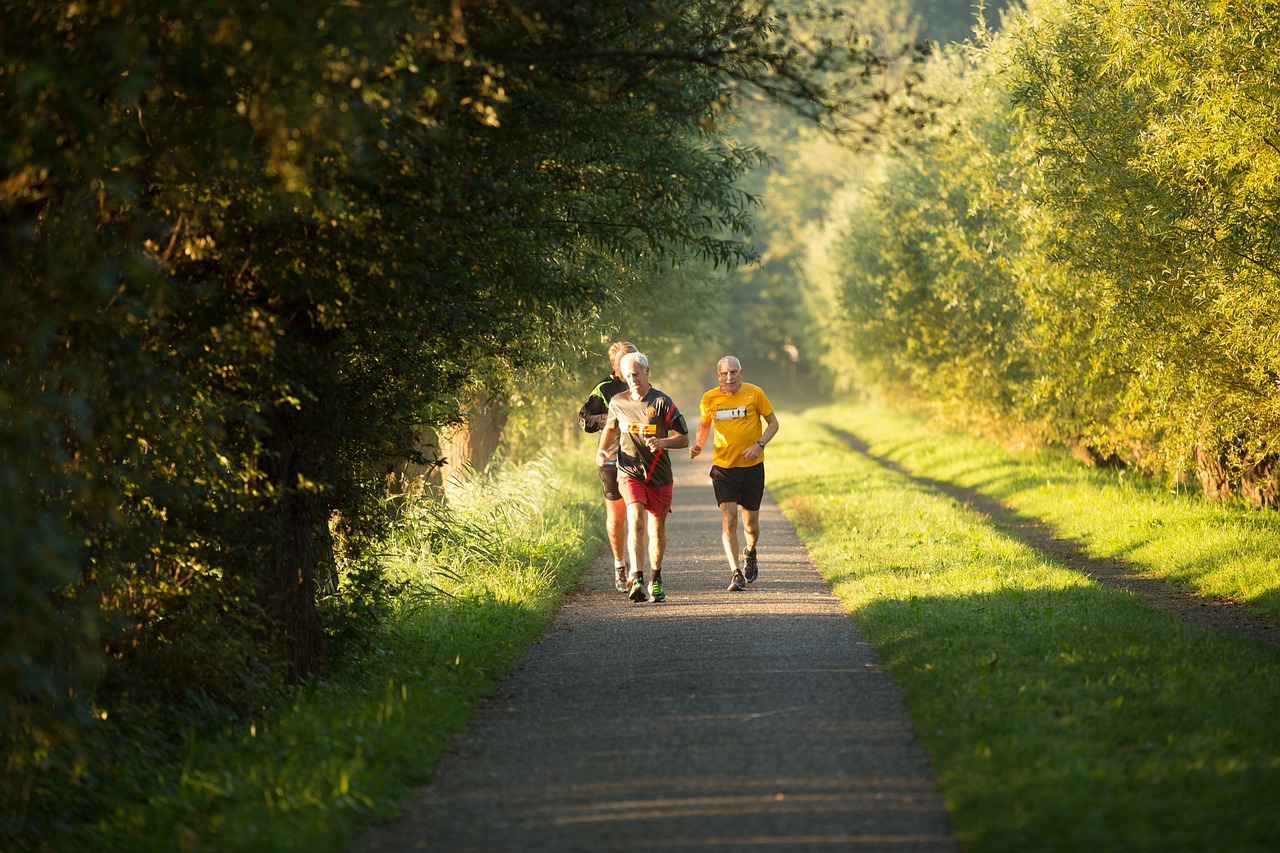
The Science of Sweating
Understanding the physiological processes behind sweating can provide valuable insights into its role in physical training, especially in self-defense. Sweating is not just a byproduct of exertion; it is a crucial mechanism for regulating body temperature. When we engage in intense physical activity, our body temperature rises. To cool down, the body activates sweat glands, releasing moisture onto the skin's surface. As this moisture evaporates, it dissipates heat, helping to maintain a stable internal temperature.
The process of sweating is primarily controlled by the hypothalamus, a small region in the brain that acts as the body’s thermostat. When the hypothalamus detects an increase in body temperature, it sends signals to the sweat glands to produce sweat. Interestingly, the composition of sweat can vary based on factors such as genetics, diet, and hydration levels. Typically, sweat is made up of water, electrolytes (like sodium and potassium), and small amounts of other substances, including urea and lactate.
Moreover, sweating can also serve as an indicator of physical exertion and fitness levels. People who are more physically conditioned tend to sweat more efficiently, as their bodies adapt to better regulate temperature through increased sweat production. This adaptation not only helps in maintaining performance during self-defense training but also enhances overall endurance. Therefore, the amount you sweat can sometimes reflect your level of fitness and how well your body is responding to the demands placed upon it.
It's essential to recognize that while sweating is a natural and beneficial process, it does not necessarily correlate with the effectiveness of your training. For example, you might find yourself drenched in sweat after a session that lacked technical focus or skill development. Thus, while sweating is a sign of physical exertion, it is crucial to balance it with the technical aspects of self-defense training. In essence, understanding the science of sweating not only helps in appreciating its role in training but also emphasizes the importance of coupling physical effort with skill acquisition for optimal self-defense performance.

Benefits of Sweating in Training
When it comes to self-defense training, sweating is often seen as a badge of honor. But have you ever stopped to think about what that perspiration really means? Beyond just a physical response to exertion, sweating plays a crucial role in enhancing your training experience. First and foremost, it’s essential for thermoregulation. As you exert yourself, your body temperature rises, and sweating helps cool you down, preventing overheating. This not only allows you to train longer but also helps maintain focus and performance during those intense sessions.
Moreover, sweating has several physiological benefits that can significantly enhance your training effectiveness. For instance, as you sweat, your body is undergoing a natural detoxification process. This means that, while you're working on your self-defense skills, your body is also flushing out toxins, which can lead to improved overall health. Sweating can also promote better circulation, as it helps the blood vessels expand, allowing more oxygen and nutrients to reach your muscles. This improved circulation can lead to enhanced endurance and faster recovery times, which are crucial for anyone engaged in rigorous training.
Additionally, sweating can be linked to mental resilience. The act of pushing through a tough workout, feeling the sweat drip down your face, can bolster your mental toughness. It’s a reminder that you’re working hard and progressing in your self-defense skills. This psychological boost can be incredibly motivating, helping you to stay committed to your training goals. In fact, many martial artists find that the more they sweat, the more they feel they are improving. It’s almost like a physical manifestation of their effort and dedication.
However, it’s important to remember that while sweating can be beneficial, it’s not the only indicator of a productive training session. The quality of your practice, the techniques you are mastering, and the intensity of your focus are equally important. So, while you might be drenched in sweat, it’s crucial to ensure that you’re also honing your skills effectively. After all, self-defense is not just about physical exertion; it’s about mastering techniques and applying them efficiently.
In summary, sweating during self-defense training serves multiple purposes. From aiding in thermoregulation and detoxification to enhancing circulation and fostering mental resilience, the benefits are significant. So, the next time you find yourself in a training session, don’t just focus on the sweat; appreciate the myriad of benefits it brings to your practice!
- Does sweating mean I'm getting a better workout? Not necessarily. While sweating can indicate exertion, the quality of your training is equally important.
- How can I tell if I'm dehydrated during training? Common signs include excessive thirst, dry mouth, fatigue, and dark-colored urine.
- What should I drink after sweating a lot? Water is essential, but consider electrolyte-rich drinks to replenish lost minerals.

Hydration and Performance
When it comes to self-defense training, staying hydrated is not just a suggestion; it's a necessity. Think of your body as a high-performance machine. Just like a car needs fuel to run efficiently, your body needs water to maintain optimal performance during intense training sessions. Sweating is a natural response to exertion, but it also leads to significant fluid loss. This is where the importance of hydration comes into play. If you're sweating buckets during your training, you might be thinking, "Hey, I'm really pushing myself!" But without proper hydration, that push can quickly turn into a struggle.
Water plays a critical role in several physiological processes that directly impact your performance. For instance, it helps regulate body temperature, lubricates joints, and transports nutrients to cells. When you're dehydrated, your body can't perform these functions effectively, leading to decreased endurance, increased fatigue, and even impaired cognitive function. Imagine trying to run a race with a flat tire; that's what training feels like without adequate hydration. You might be putting in the effort, but you won't get very far.
So, how much water do you really need? While individual hydration needs can vary based on factors like body weight, climate, and training intensity, a general guideline is to drink at least half your body weight in ounces of water daily. For example, if you weigh 160 pounds, aim for about 80 ounces of water each day. Additionally, during training, it’s crucial to replenish fluids lost through sweat. As a rule of thumb, drink about 8 ounces of water every 15-20 minutes of exercise, especially in hot and humid conditions.
To help visualize the impact of hydration on performance, consider the following table:
| Hydration Level | Effects on Performance |
|---|---|
| Well-Hydrated | Optimal endurance, better focus, and improved recovery |
| Moderately Dehydrated | Reduced endurance, increased fatigue, and slower recovery |
| Severely Dehydrated | Significantly impaired performance, risk of heat-related illnesses |
In summary, hydration is a critical component of self-defense training that should never be overlooked. By ensuring that you're properly hydrated, you not only enhance your physical performance but also support your mental acuity, allowing you to react swiftly and effectively in self-defense scenarios. So, the next time you hit the mats or the dojo, remember to keep that water bottle close. Your body will thank you, and your training will be all the more effective for it.
- How can I tell if I'm dehydrated? Look out for signs such as dark yellow urine, dizziness, dry mouth, and fatigue. If you experience any of these symptoms, it's time to hydrate!
- Is water the best option for hydration during training? Water is great for most training sessions, but for prolonged or intense workouts, consider sports drinks that contain electrolytes to replenish lost salts.
- Can I overhydrate? Yes, while rare, overhydration can lead to a condition called hyponatremia, where sodium levels in your blood become dangerously low. Balance is key!

Signs of Dehydration
Dehydration is a silent enemy, creeping up on you when you least expect it, especially during intense self-defense training sessions. It’s crucial to recognize the before it impacts your performance and overall health. When your body loses more fluids than it takes in, it can lead to a range of symptoms that could hinder your ability to train effectively.
One of the first signs of dehydration is a feeling of thirst. If you find yourself reaching for water more often than usual, your body is signaling that it needs hydration. Additionally, pay attention to the color of your urine; a darker shade often indicates that you’re not drinking enough fluids. Ideally, your urine should be a light yellow color, resembling lemonade. If it’s darker, it’s time to hydrate!
Other common symptoms include:
- Dry mouth and throat: A parched mouth can be a clear indicator that your body is running low on fluids.
- Fatigue: Feeling unusually tired or sluggish during training could mean you’re dehydrated.
- Dizziness or lightheadedness: If you start to feel faint, it’s a sign that your body is struggling to function optimally.
- Headaches: Dehydration can lead to headaches, which can distract you from focusing on your self-defense techniques.
Moreover, dehydration can also affect your mental clarity. You might find it harder to concentrate on your moves or remember techniques, which is critical in self-defense scenarios. This mental fog can be as detrimental as physical fatigue, making it essential to stay hydrated. In fact, studies have shown that even mild dehydration can impair cognitive performance, which can be a game changer during practice.
In summary, recognizing these signs of dehydration can help you maintain your training intensity and effectiveness. Always listen to your body; it’s your best indicator of when to replenish fluids. Keeping a water bottle handy during training sessions and taking regular sips can make a world of difference in how you feel and perform.
Q: How much water should I drink before, during, and after training?
A: It's generally recommended to drink about 17-20 ounces of water 2-3 hours before exercising, 8 ounces during your workout, and another 8 ounces within 30 minutes after training.
Q: Can I rely on thirst alone to gauge my hydration needs?
A: While thirst is a good indicator, it’s best to monitor your hydration proactively, especially during intense training sessions. Don’t wait until you’re thirsty to drink.
Q: Are there any foods that can help with hydration?
A: Yes! Foods with high water content, such as cucumbers, oranges, and watermelon, can contribute to your overall fluid intake.
Q: What should I do if I notice signs of dehydration during training?
A: If you experience any signs of dehydration, take a break, hydrate, and allow your body to recover before resuming training.
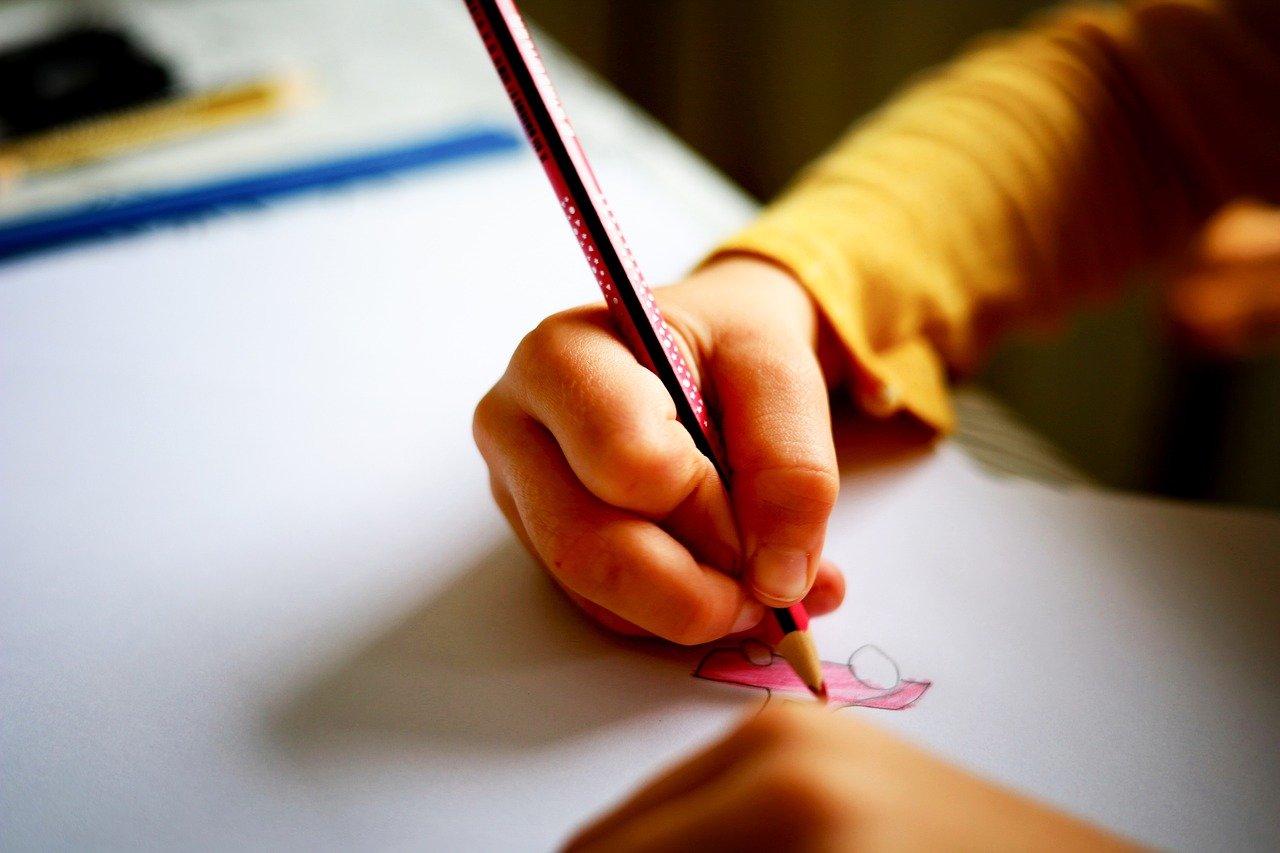
Replenishing Fluids
After an intense self-defense training session, your body has lost a significant amount of fluids through sweat, and it’s crucial to replenish these fluids to support recovery and maintain performance. Think of your body as a high-performance vehicle; just like a car needs fuel to run efficiently, your body requires proper hydration to function at its best. The key is to understand not just the quantity of fluids you need, but also the quality of those fluids.
Water is essential, but it’s often not enough on its own, especially after a rigorous workout. When you sweat, you lose not just water but also electrolytes—minerals like sodium, potassium, and magnesium that help regulate various bodily functions. If you only drink water, you might find yourself feeling sluggish or fatigued because you’re not replacing those vital electrolytes. So, what should you drink? Here’s a quick overview:
| Fluid Type | Benefits |
|---|---|
| Water | Hydrates the body and aids in recovery. |
| Electrolyte Drinks | Replenishes lost minerals and helps maintain hydration balance. |
| Coconut Water | Natural source of electrolytes, low in sugar. |
| Sports Drinks | Designed for hydration and energy replenishment during prolonged exercise. |
Incorporating these fluids into your post-training routine can make a significant difference in how you feel and perform in subsequent sessions. Aim to drink at least 16-24 ounces of fluid for every pound lost during training. A good way to gauge your hydration level is to check the color of your urine; pale yellow indicates good hydration, while dark yellow suggests you need to drink more.
Additionally, consider timing your fluid intake. It’s beneficial to start hydrating immediately after your training session, and continue sipping fluids throughout the day. This proactive approach helps your body recover more effectively and prepares you for your next training session. Remember, proper hydration is not just about quenching your thirst; it’s about fueling your body for optimal performance in self-defense training.
So, the next time you finish a training session and feel that familiar drip of sweat, remember to give your body the care it deserves. Replenishing fluids isn’t just a good practice; it’s a vital part of your self-defense journey that can enhance your skills, endurance, and overall effectiveness on the mat.
- How much water should I drink after training?
It’s recommended to drink at least 16-24 ounces of fluid for every pound lost during training. - Are sports drinks better than water?
Sports drinks can be beneficial if you’re engaging in prolonged exercise, as they replenish both fluids and electrolytes. - Can I drink coconut water instead of sports drinks?
Coconut water is a great natural alternative that provides electrolytes with less sugar than most sports drinks. - What are the signs of dehydration?
Common signs include dark urine, dizziness, dry mouth, and fatigue.
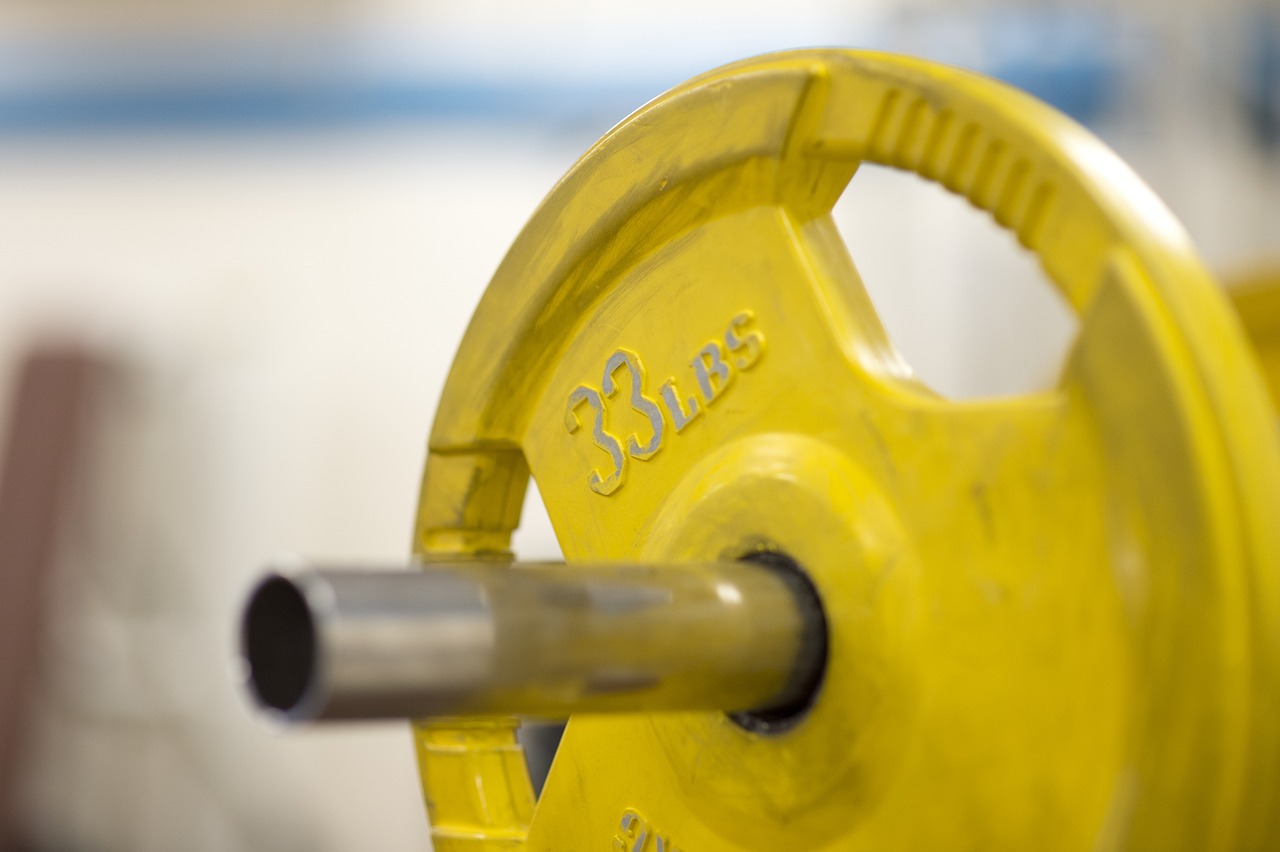
Mindset and Motivation
When it comes to self-defense training, your mindset plays a crucial role in your overall performance and effectiveness. Think of your mind as the engine that drives your body; without proper fuel and maintenance, it won't run smoothly. The act of sweating during intense training sessions can actually serve as a powerful motivator. As you drip with perspiration, it’s a tangible reminder of your hard work and dedication. This feeling can enhance your mental toughness, pushing you to go further than you thought possible.
Moreover, the psychological benefits of sweating extend beyond just motivation. When you sweat, your body releases endorphins, often referred to as the “feel-good” hormones. These chemicals can uplift your mood, reduce stress, and increase your overall sense of well-being. Imagine walking into a training session feeling stressed or anxious, but by the end, after a good sweat, you feel lighter and more empowered. This transformation can significantly impact your approach to self-defense, allowing you to train with a clearer mind and a more positive outlook.
Additionally, the social aspect of sweating it out with fellow practitioners can’t be overlooked. Training in a group setting often fosters a sense of camaraderie and shared purpose. When you see others pushing their limits and breaking a sweat, it can inspire you to dig deeper and push through your own barriers. The collective energy in a training room can create an environment where everyone is motivated to improve, making the experience not just about individual growth but also about community strength.
However, it’s essential to maintain a balanced perspective. While sweating can be a measure of effort, it’s not the only indicator of progress. Focusing solely on how much you sweat may lead to burnout or even injury. It’s important to listen to your body and understand that effective training also involves skill acquisition, technique refinement, and mental focus. In this way, your mindset should not only embrace the physical challenge but also appreciate the learning journey that comes with self-defense training.
To summarize, the interplay between mindset and motivation in self-defense training is intricate and multifaceted. Sweating serves as a physical manifestation of effort that can boost your mental resilience and foster a supportive training environment. Yet, it’s vital to recognize that true progress lies in a harmonious balance between physical exertion and the technical mastery of self-defense techniques.
- Does sweating mean I'm getting a better workout? Sweating can indicate exertion, but it’s not the sole measure of a good workout. Focus on technique and skill development as well.
- How can I stay motivated during tough training sessions? Setting small, achievable goals, training with a partner, and reminding yourself of your progress can help maintain motivation.
- What should I do if I feel dehydrated after sweating? Rehydrate with water or electrolyte drinks and take a break to allow your body to recover.
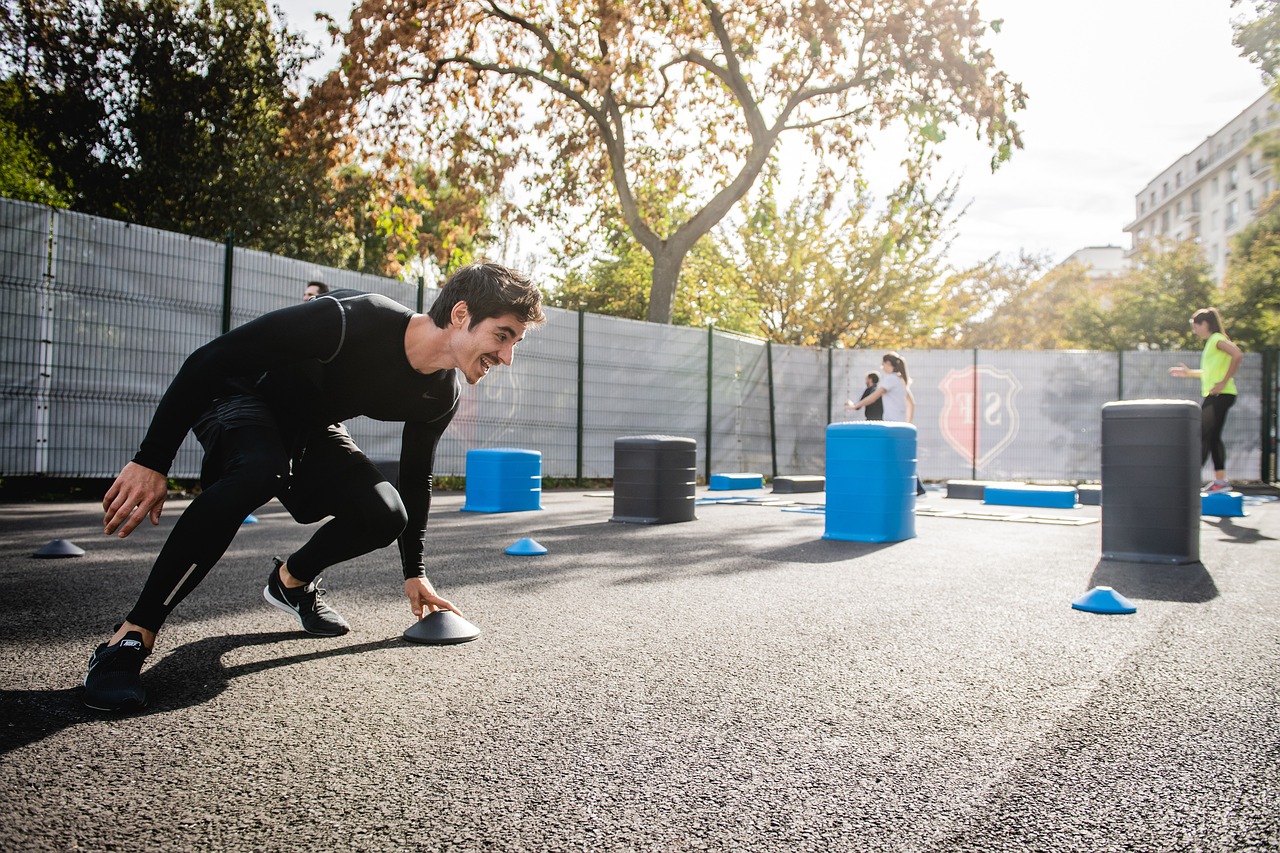
Training Intensity and Sweat Production
When it comes to self-defense training, the relationship between training intensity and sweat production is not only fascinating but also crucial for understanding how our bodies respond to physical exertion. Think of your body as a well-oiled machine; the harder you push it, the more it works to keep you cool. This process involves a complex interplay of physiological responses that ultimately leads to increased perspiration. But why does this happen? Well, as your heart rate increases and your muscles engage, your body generates heat. To manage this heat, your body’s sweat glands kick into gear, producing sweat to help cool you down.
Interestingly, the amount of sweat you produce can vary significantly based on several factors, including your fitness level, the environment, and, of course, the intensity of your training. For example, an experienced martial artist may sweat more profusely during a high-intensity sparring session than a beginner performing the same drills at a lower intensity. This difference is due to the body's adaptation to regular training, which can enhance sweat gland function and improve thermoregulation.
To illustrate this point, consider the following table that highlights how different training intensities can influence sweat production:
| Training Intensity | Sweat Production (Liters/hour) | Typical Activities |
|---|---|---|
| Low Intensity | 0.5 - 1.0 | Light stretching, basic drills |
| Moderate Intensity | 1.0 - 2.0 | Shadow boxing, pad work |
| High Intensity | 2.0 - 3.5 | Sparring, high-energy drills |
As you can see from the table, the more you push yourself, the more sweat you’re likely to produce. But it’s not just about sweating more; it’s about what that sweat represents. Increased sweat production often correlates with higher energy expenditure, which can lead to greater caloric burn and improved cardiovascular fitness. However, it’s essential to remember that sweating alone doesn’t equate to effective skill acquisition in self-defense. It’s a common misconception that simply sweating buckets means you’re training hard enough. In reality, the quality of your training—how well you’re executing techniques and improving your skills—matters just as much.
Moreover, the environment in which you train can significantly affect your sweat levels. Training in a hot and humid space will naturally lead to more sweating than practicing in a cooler, air-conditioned room. This is where understanding your body’s responses becomes vital. If you're training in a sauna-like environment, you might find yourself drenched in sweat even with moderate exertion. On the flip side, training in cooler conditions might require you to push harder to reach the same level of perspiration.
Ultimately, balancing training intensity with skill acquisition is key to effective self-defense training. While sweating can be a sign of hard work and effort, it’s essential to focus on mastering techniques and improving your overall performance. So, the next time you're in a training session, remember that while it’s great to break a sweat, the real goal is to enhance your skills and build your confidence in self-defense.
- Does sweating more mean I'm training harder? Not necessarily. While increased sweat can indicate higher exertion, it’s essential to focus on technique and skill improvement.
- How can I improve my sweat production during training? Increasing training intensity and ensuring a proper warm-up can help enhance sweat production.
- What should I do if I sweat excessively during training? Make sure to stay hydrated and take breaks as needed to avoid dehydration.
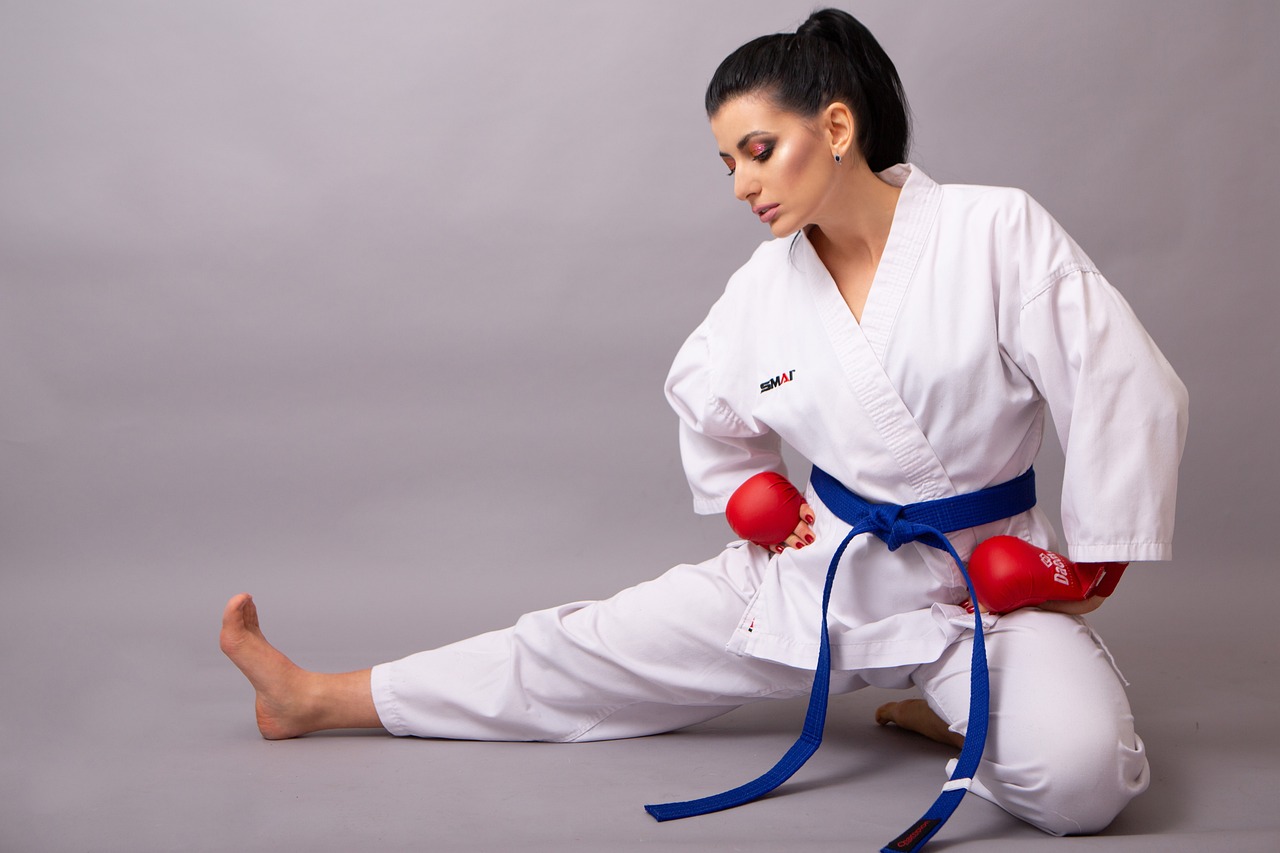
Optimal Training Conditions
When it comes to self-defense training, the environment in which you practice can significantly impact your performance and the effectiveness of your workouts. Just like a plant needs the right conditions to grow, your body requires optimal training conditions to thrive. Factors such as temperature, humidity, and even ventilation play crucial roles in how much you sweat and how effectively you can train.
For instance, training in a hot and humid environment can lead to increased sweat production, which might seem beneficial at first glance. However, it can also lead to quicker fatigue and dehydration if you're not careful. On the flip side, training in cooler conditions can help you maintain your energy levels longer, but you may not sweat as much, which could limit some of the perceived benefits associated with sweating. It's a bit of a double-edged sword, isn't it?
To find the sweet spot, consider the following optimal training conditions:
- Temperature: Aim for a training environment that is warm but not excessively hot. A range of 70°F to 80°F (21°C to 27°C) is often ideal for intense workouts.
- Humidity: Keeping humidity levels between 40% and 60% helps your body to sweat effectively without risking dehydration.
- Ventilation: Good airflow is essential. A well-ventilated space allows sweat to evaporate, helping to cool your body down and maintain your stamina.
Moreover, consider the time of day for your training sessions. Many practitioners find that training in the early morning or late afternoon provides a more comfortable environment, as temperatures are typically cooler during these times. This can help you focus on technique and skill acquisition rather than just sweating it out.
In addition to environmental factors, don't forget about your gear! Wearing the right clothing can also affect how much you sweat and how comfortable you feel during training. Lightweight, moisture-wicking fabrics can help keep you cool and dry, allowing you to focus on your self-defense techniques rather than your discomfort.
Ultimately, the goal is to create an environment that encourages both sweating and skill development. By fine-tuning these conditions, you can maximize your training effectiveness and ensure that you're getting the most out of each session. Remember, it's not just about how much you sweat; it's about how well you can apply what you've learned in a controlled, effective manner!
Q: Does sweating indicate a good workout?
A: Not necessarily. While sweating can indicate that your body is working hard, it doesn't always correlate with the quality of your workout or skill acquisition. Focus on technique and effectiveness as well.
Q: How can I prevent dehydration during training?
A: Make sure to drink plenty of fluids before, during, and after your training sessions. Electrolyte drinks can also be beneficial, especially in hot conditions.
Q: What should I wear for optimal training?
A: Lightweight, breathable, and moisture-wicking clothing is ideal for self-defense training, as it helps regulate your body temperature and keeps you comfortable.

Balancing Sweat and Skill Acquisition
When it comes to self-defense training, the relationship between sweat and skill acquisition is not as straightforward as one might think. Sure, we often associate a good workout with a good sweat, but does that really mean we’re mastering the techniques? Think of it this way: just because a chef is sweating in the kitchen doesn’t mean the dish is turning out perfectly. In self-defense, the goal is to balance physical exertion with skill development to truly excel.
While sweating can indicate that you’re pushing your limits, it’s essential to remember that skill acquisition is a mental process as much as it is a physical one. Imagine you’re in a self-defense class, and you’re drenched in sweat after a grueling session. But if you haven’t taken the time to focus on the techniques being taught, you might be missing the mark. It’s crucial to engage your mind during training, analyzing movements and understanding the mechanics behind them. This mental engagement is what transforms physical exertion into real skill.
To illustrate this balance, let’s consider a few key points:
- Quality over Quantity: It’s not just about how hard you train but how effectively you train. Focus on executing techniques correctly rather than simply sweating it out.
- Mindful Practice: Incorporate mindfulness into your training. Pay attention to your body mechanics and the flow of movements, ensuring that you’re learning rather than just exerting.
- Feedback Loop: Seek feedback from instructors and peers. This can help you identify areas for improvement, ensuring that your sweat translates into skill.
Moreover, it’s important to recognize that the body can only absorb so much information at once. Overloading your training sessions with high-intensity drills may lead to fatigue, which can hinder your ability to learn effectively. Instead, consider structuring your training to include a mix of high-intensity workouts and focused skill drills. This way, you can sweat it out while also honing your techniques.
Ultimately, the goal of self-defense training is to become proficient in defending yourself, and that requires a blend of physical conditioning and skill mastery. So, the next time you find yourself drenched in sweat, take a moment to assess whether you’re truly enhancing your skills or just working hard. Remember, it’s about finding that sweet spot where effort meets effectiveness.
- Does sweating more mean I'm getting better at self-defense? Not necessarily. While sweating indicates exertion, skill improvement requires focused practice and mental engagement.
- How can I improve my skill acquisition during training? Focus on technique, seek feedback, and balance intense workouts with mindful practice.
- Is it normal to sweat a lot during self-defense training? Yes, sweating is a natural response to physical exertion, but it should not be the sole indicator of your training effectiveness.
Frequently Asked Questions
-
Does sweating more during self-defense training mean I'm getting better?
Not necessarily! While sweating can indicate that you're working hard, it doesn't directly correlate with skill improvement. It's important to focus on both exertion and technique to truly enhance your self-defense abilities.
-
What role does hydration play in sweating and performance?
Hydration is crucial for maintaining performance during training. When you sweat, you lose fluids and electrolytes, which can lead to dehydration. Staying hydrated helps you perform better and recover faster, so drink plenty of water before, during, and after your training sessions.
-
How can I tell if I'm dehydrated during training?
Common signs of dehydration include dry mouth, fatigue, dizziness, and dark-colored urine. If you notice these symptoms, it's important to take a break, hydrate, and allow your body to recover to ensure optimal performance.
-
What are some effective ways to rehydrate after sweating?
After sweating, it's essential to replenish lost fluids. Drinking water is a good start, but consider consuming electrolyte drinks or foods rich in electrolytes, like bananas and sports drinks, to help restore balance and enhance recovery.
-
Can sweating affect my motivation during training?
Absolutely! Sweating can be a sign of hard work and can boost your mental toughness. It often leads to a sense of accomplishment, which can motivate you to push through tough training sessions and improve your self-defense skills.
-
What factors influence sweat production during self-defense training?
Several factors can affect how much you sweat, including the intensity of your workout, the temperature and humidity of your training environment, and your individual physiology. Higher intensity workouts and warmer conditions typically lead to increased sweat production.
-
Is there a balance between sweating and skill acquisition in training?
Yes, finding a balance is key. While sweating indicates physical exertion, focusing solely on that can detract from learning techniques. It's essential to combine physical training with skill development to maximize your effectiveness in self-defense.



















